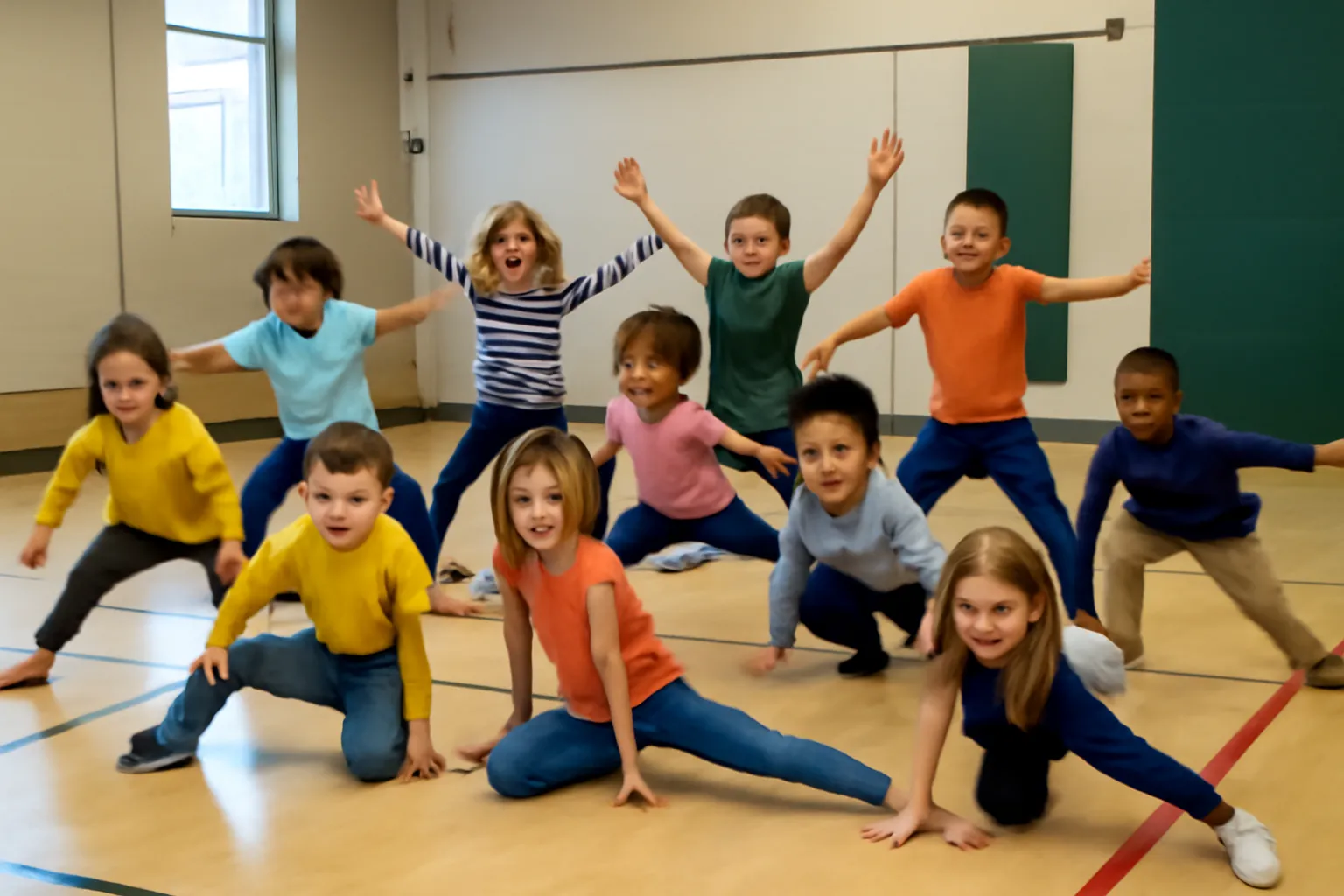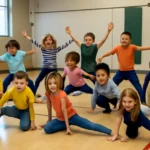In every child’s educational journey, the first semester of school is a period full of excitement, growth, and new experiences. For elementary school students, physical play during this time is especially significant. It’s more than just fun—physical activities help develop motor skills, enhance social interactions, and lay the foundation for a lifetime of healthy habits. But how exactly does body play unfold in the early grades, and why is it so important at the beginning of the school year?
The Importance of Body Play for 1st Graders
For first graders, the world of physical play is both a thrilling and challenging space to navigate. They are still developing basic motor skills, which include coordination, balance, and agility. Engaging in regular body play, whether through organized exercises, games, or free play, provides the perfect environment for these young learners to refine these skills.
At the start of the semester, physical activities are not just about improving fitness—they are designed to help students acclimate to school routines and build social bonds with their peers. One common activity for first graders involves simple games such as tag, balance exercises, or running drills, all of which strengthen their gross motor abilities. Through these activities, they also learn valuable lessons about teamwork, communication, and fair play.
Why is Body Play Crucial for 1st Graders?
-
Building Motor Skills At this age, children are refining both fine and gross motor skills. Body play activities help them practice running, jumping, hopping, and other movements that require coordination.
-
Social Development First graders are learning to work together in groups, share space, and interact with peers. Physical play fosters these social connections in a fun, low-stress environment.
-
Establishing Routines As children begin their school journey, physical play provides a structured yet enjoyable way to introduce them to new school routines and schedules.
To understand the full impact of these activities, one can look at the example of a typical physical play session: children may begin with warm-up exercises, then move into group games like “Simon Says” or relay races, followed by cool-down stretches. This process not only helps them build physical strength but also instills habits that will support their academic and social growth for years to come.
👉 Explore More on Physical Activities for 1st Graders 👈
Elementary Body Play: A Key to Holistic Development
As children progress through elementary school, the scope of their physical play expands. While first grade may focus on the basics, elementary body play in later grades introduces more complex activities that challenge not just motor skills but cognitive abilities too. Whether it’s through structured gym classes, outdoor sports, or free playtime, physical activity offers an essential outlet for creativity, concentration, and emotional regulation.
In grades two and three, activities might include more refined sports like soccer, basketball, or swimming, which require strategic thinking and teamwork. These activities push students to develop better hand-eye coordination, improve fitness levels, and hone their decision-making skills. Furthermore, children learn how to handle success and failure in these competitive, yet supportive, environments.
How Physical Play Enhances Cognitive Development
-
Improves Focus Physical activities improve blood flow to the brain, enhancing cognitive functions like concentration and memory.
-
Boosts Emotional Well-Being Through physical play, children can release stress and emotions, leading to improved emotional regulation.
-
Fosters Creativity Structured physical games often allow for creative thinking, whether it’s designing new team strategies or coming up with unique ways to solve a game challenge.
By making body play an integral part of the school day, educators provide students with a holistic approach to learning that encourages both physical and intellectual growth. It also helps establish a pattern of lifelong activity that students can carry with them beyond the classroom.
👉 Learn More About Elementary Body Play 👈
Low-Grade Body Play: Shaping Healthy Habits Early
In the lower grades, body play is crucial not only for motor skill development but also for establishing healthy habits that can last a lifetime. Students in grades one through three are especially impressionable, meaning that the habits they form early on can influence their future attitudes toward physical activity. It is during this stage that students begin to understand the value of staying active, not just for fun, but for overall well-being.
Through body play activities, students learn the importance of physical fitness, developing coordination and stamina while gaining an appreciation for movement. These activities also build self-confidence as children see themselves improving in skills like running, jumping, or even dancing. Teachers can further cultivate these habits by promoting a positive attitude towards physical challenges and encouraging students to set personal goals.
Why Low-Grade Body Play Matters for Lifelong Health
-
Promotes Active Lifestyles The earlier children get used to being active, the more likely they are to carry this behavior into adulthood.
-
Builds Confidence Completing physical challenges boosts children’s self-esteem and encourages them to try new activities.
-
Supports Mental Health Physical play releases endorphins, which help regulate mood and combat feelings of stress or anxiety.
One example from a classroom could involve a short fitness circuit designed to help children improve balance, strength, and flexibility. These sessions could include simple moves such as skipping, hopping on one foot, or carrying weighted objects across a course. These activities challenge students while reinforcing the importance of movement for overall health.
👉 Discover More About Low-Grade Body Play 👈
Conclusion: The Power of Physical Play for Elementary Students
The first semester of elementary school is an exciting time for students, and physical play serves as a cornerstone for their development. Whether it’s for first graders still mastering basic motor skills, older elementary students refining their athleticism, or younger children establishing lifelong habits, body play plays a crucial role in helping children thrive both physically and mentally.
As we continue to prioritize the importance of physical play, it’s clear that these early years are not just about fun—they are about setting up children for a healthier, happier future. By promoting physical activity in the classroom and beyond, we give students the tools they need to develop into well-rounded individuals who appreciate the power of movement in their daily lives.
“Play is the highest form of research.” – Albert Einstein. This sentiment captures the essence of why body play in elementary school is so much more than just exercise; it is the foundation of all future learning and growth.






